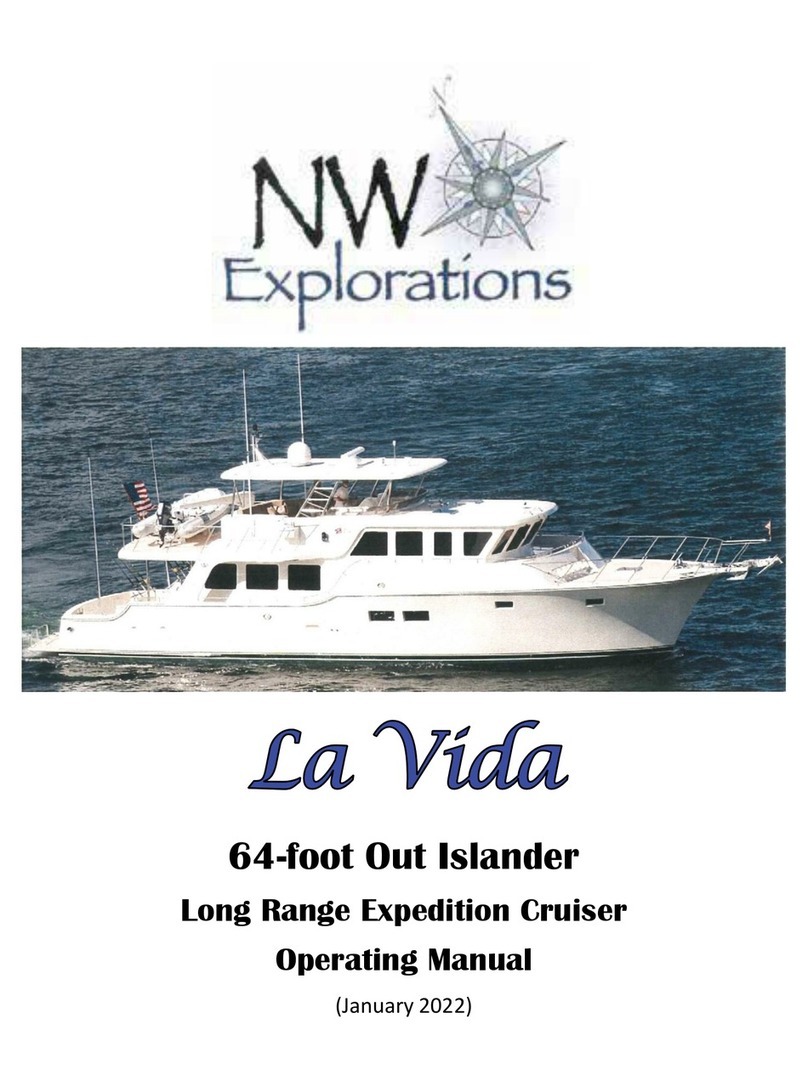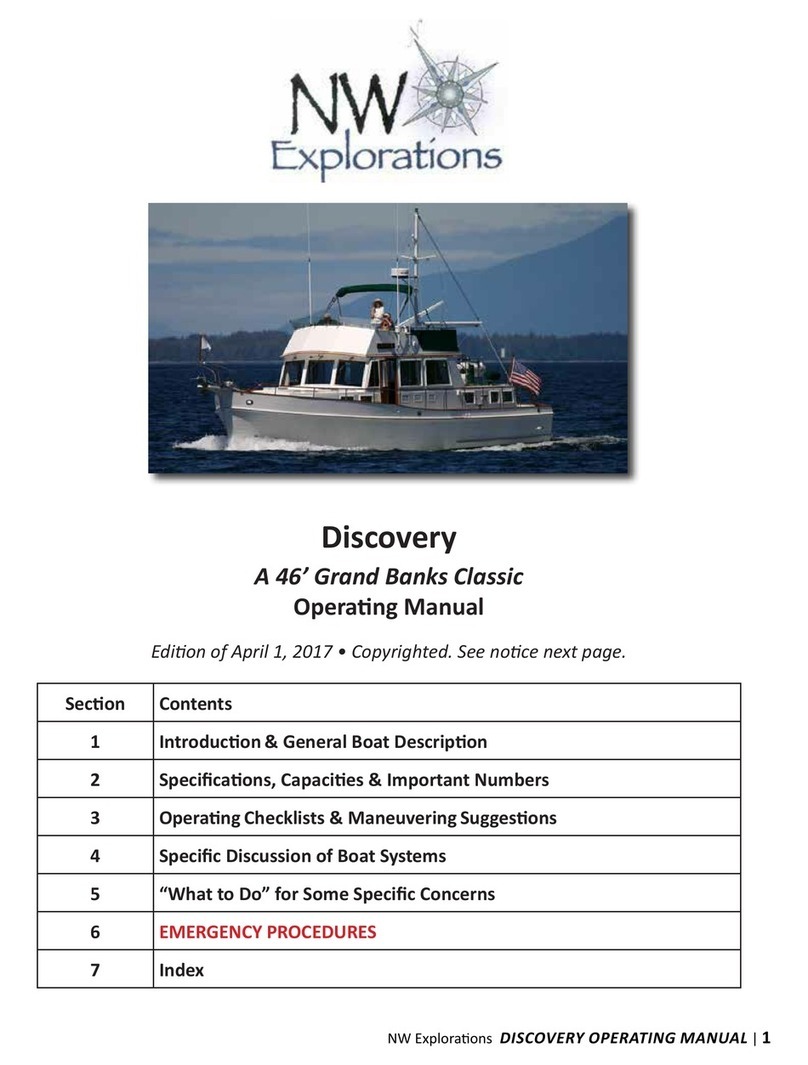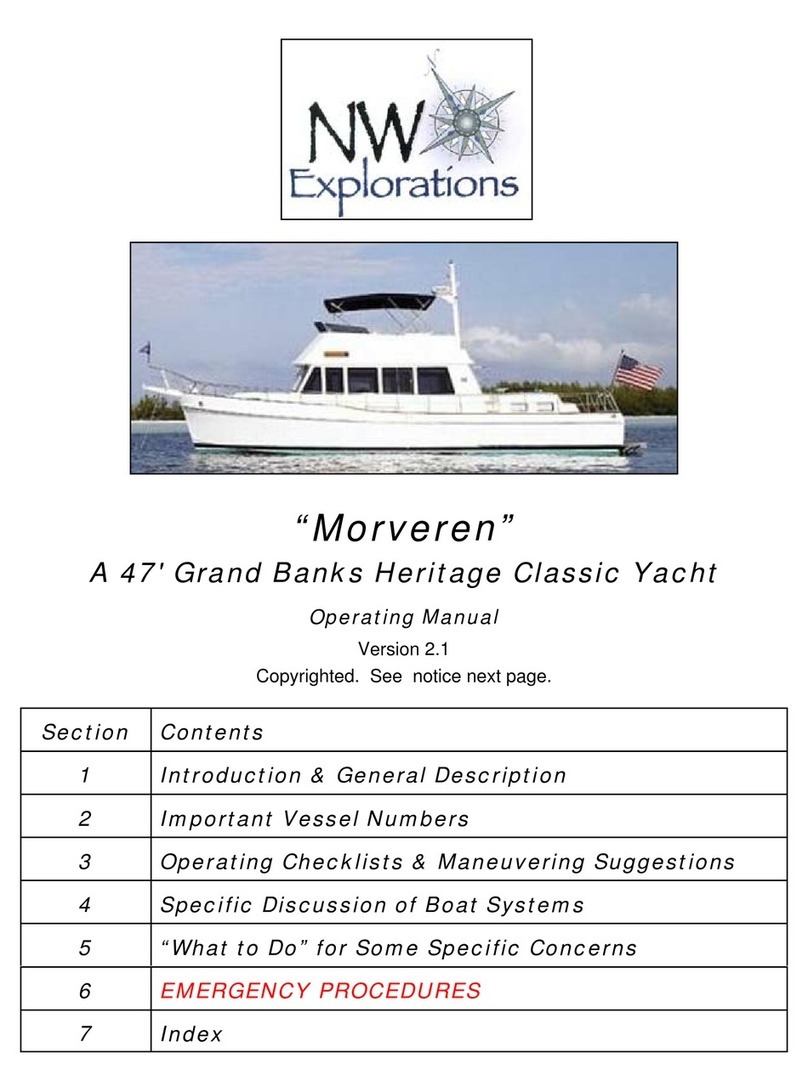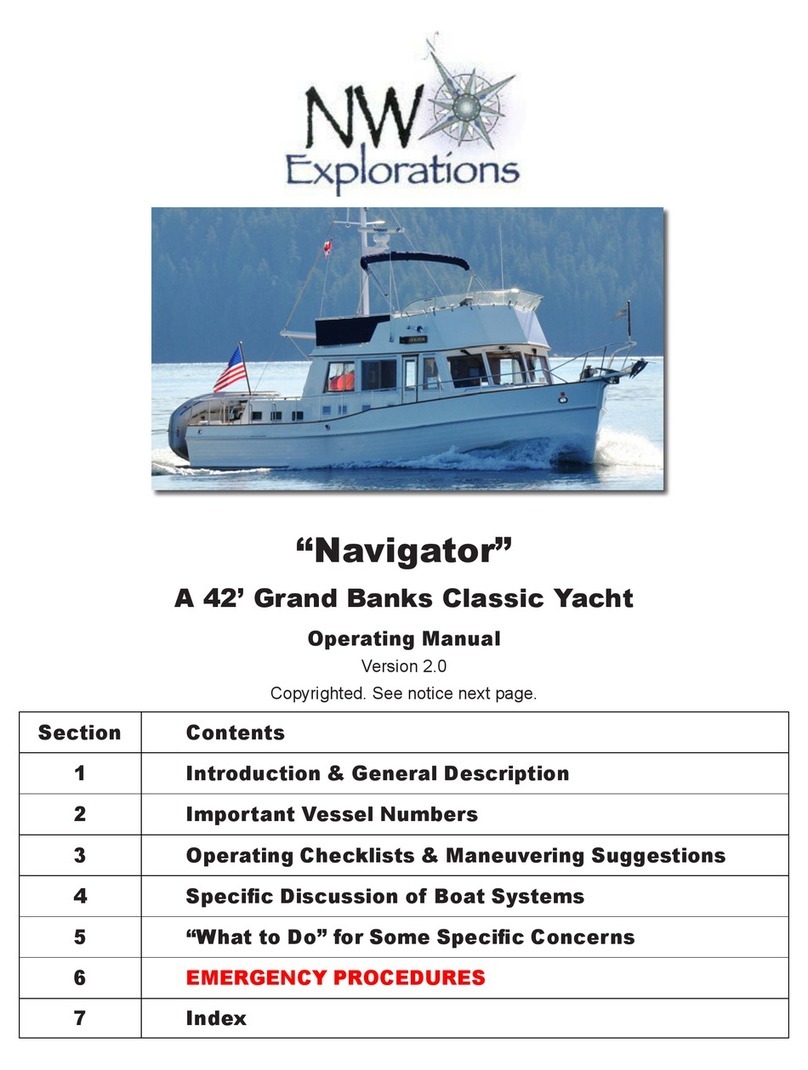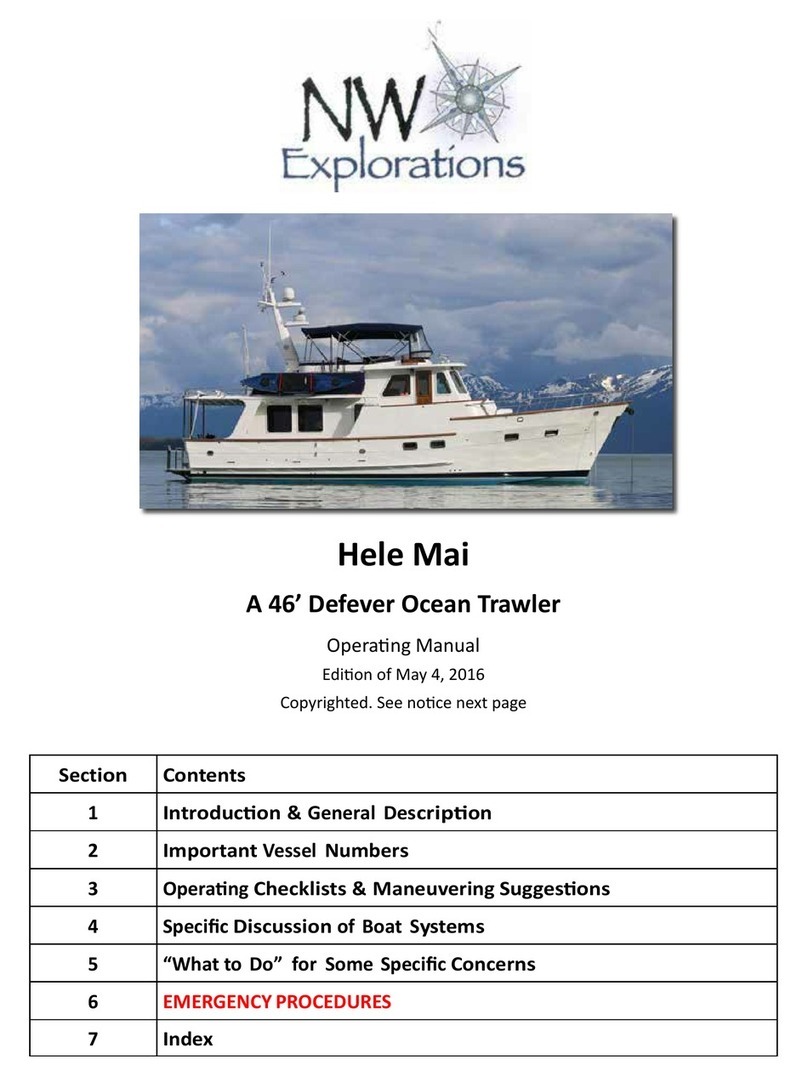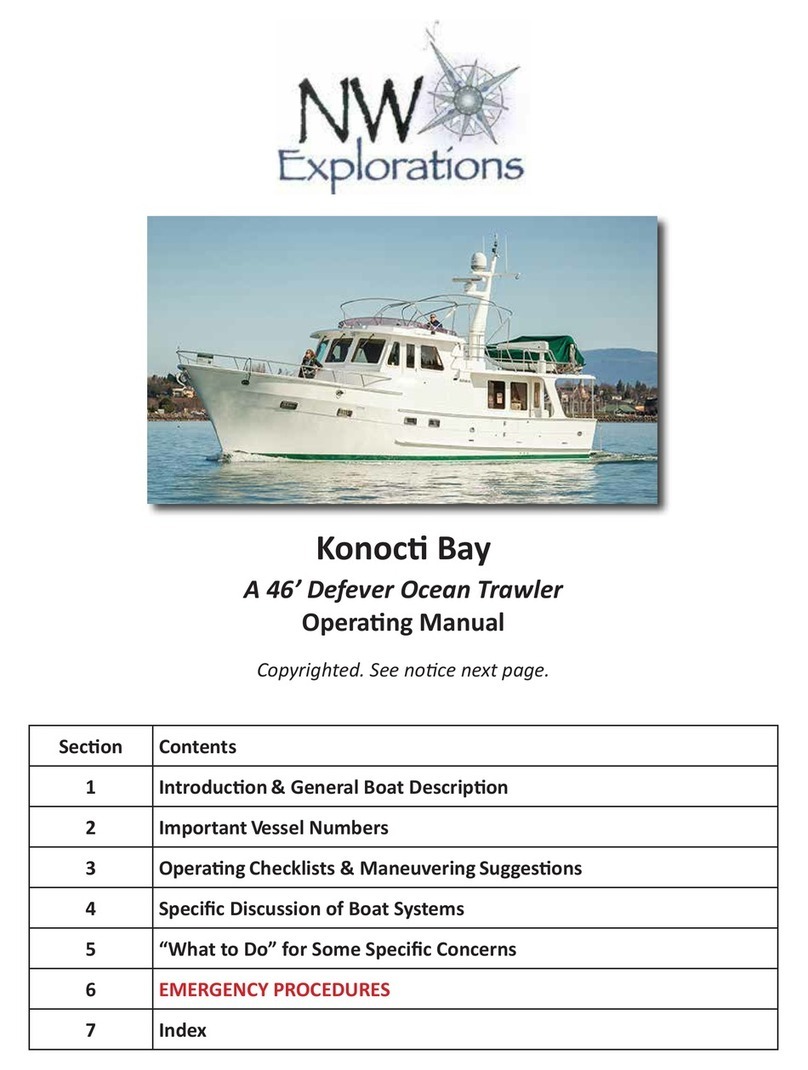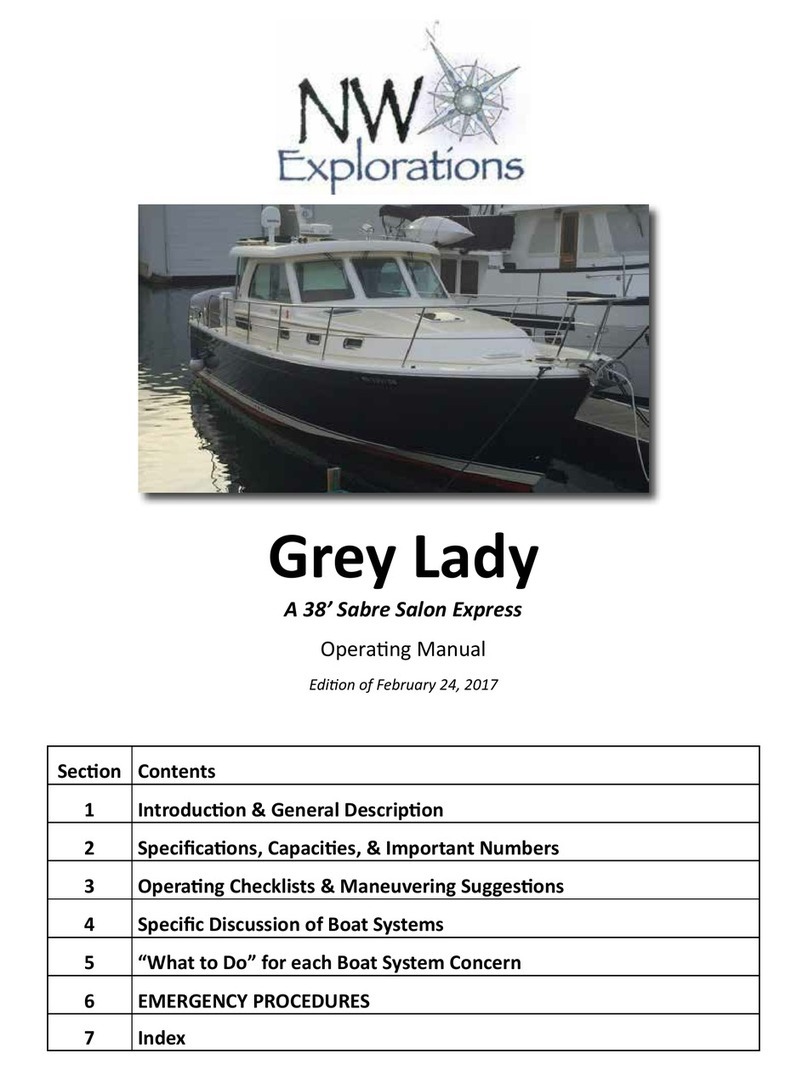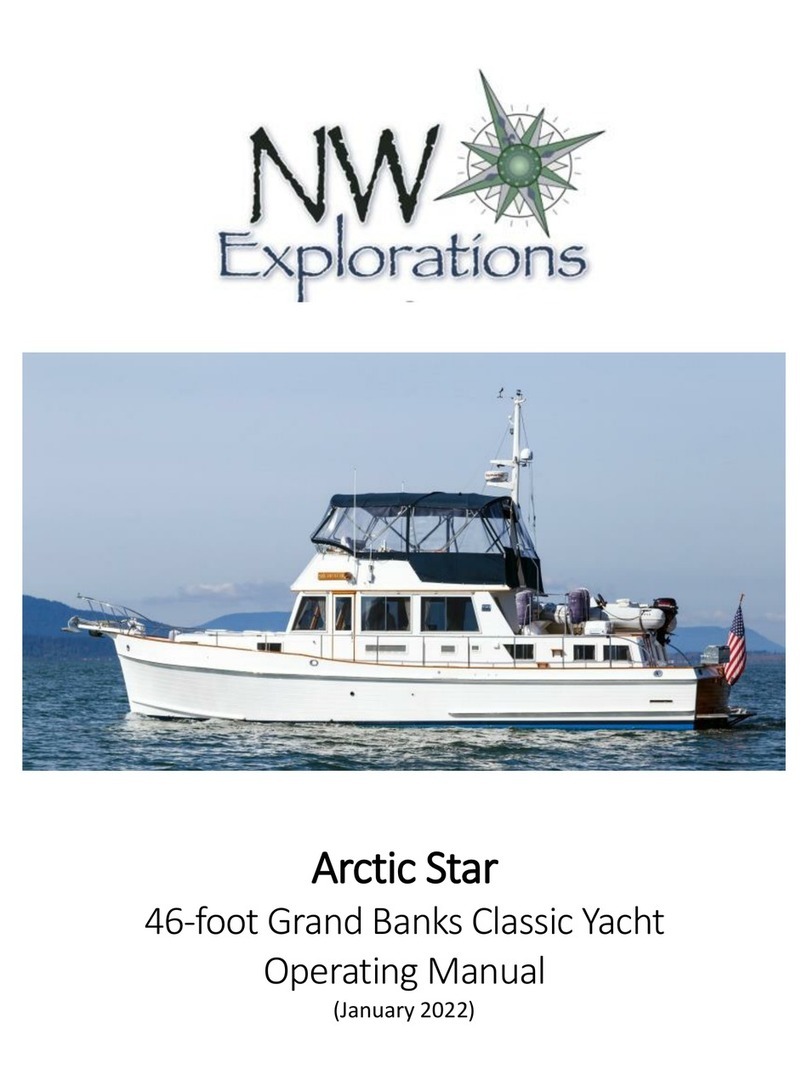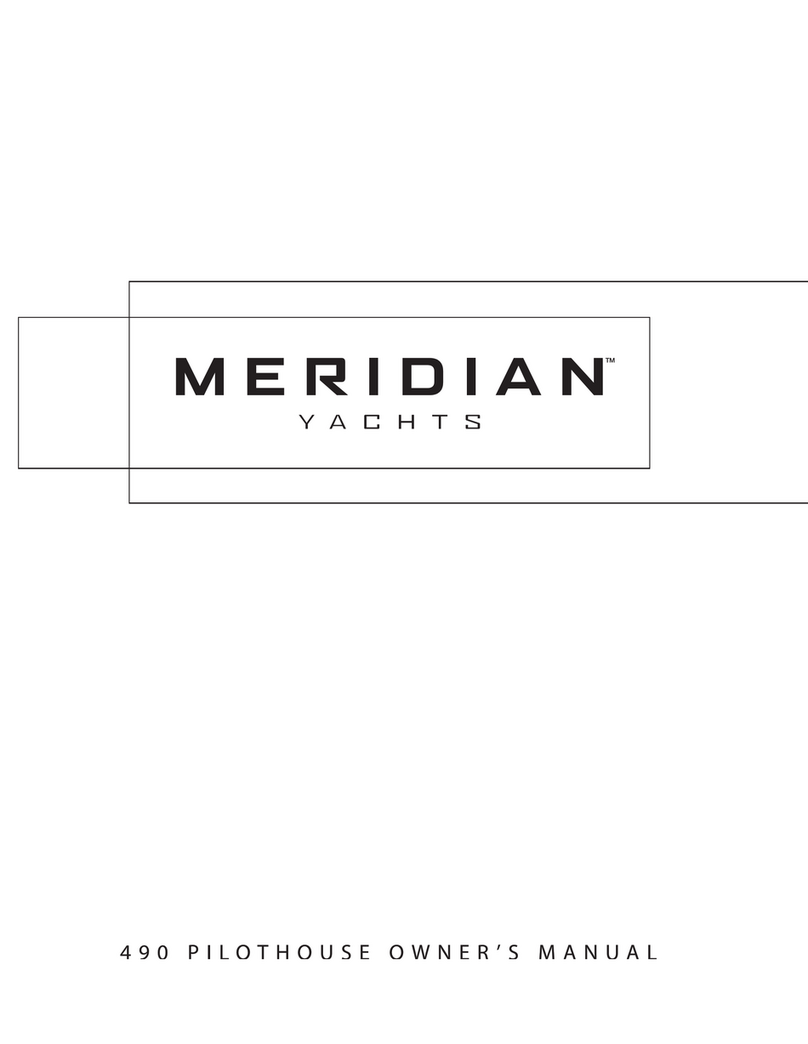
Warning!
This notice is a part of this manual, and is placed here to warn you as an owner, crew member or
passenger on this vessel that the author of this manual assumes no responsibility for any errors or
omissions herein, and represents only that the writings and illustrations herein represent his “best
efforts” to provide a comprehensive overview of the vessel, so that it can be operated by a person who
has the necessary experience and/or training to operate such a vessel given the additional information
herein.
You should be aware that this operating manual is provided as a convenience to the owner(s),
crew
members
and
passengers
on this
vessel,
and is not
complete
in
every
detail.
Given
the complexity of
this boat and its systems, there is no way that all
conditions, contingencies,
and operating details can
be covered, both because of space limitations and because of ordinary oversight as contingencies are
speculated upon by the author. Likewise, it is possible either through oversight and/or changes in the
vessel as a result of additions, modications, or deletions to or of equipment since publication of this
manual, that items discussed will operate differently than described, be absent from the vessel, or be
added to the vessel without discussion in this volume.
As a vessel owner, crew member or passenger on this vessel, you are here at your own risk, and the
author of this manual has no responsibility for your actions whatsoever. If you do not feel competent to
undertake any or all operations detailed herein, do not undertake it/them; get help from a competent
person.
I thank you, (and my lawyer thanks you.)
Copyright 2012 Joseph D. Coons
This manual was written for this boat’s owner and its charter company by Joseph D. Coons,
1220
Birch
Falls
Drive,
Bellingham
W
A
98229,
tel
(360)
647-0288,
Email
[email protected].
All rights reserved. This manual may not be quoted, copied, or duplicated, in whole or in
part, in printed or electronic form, without express written consent from the author.
About the Author
Joe Coons is a retired AM-FM broadcasting station owner and computer systems corporate executive who
throughout his life was involved in communications and mechanical, electrical, and electronic systems. He
cruised his own boat on the Hudson River and Lake Champlain when a teen and in his early twenties, and
during the 70’s and 80’s accumulated some 2,500 hours as an instrument-rated private pilot. Beginning in
1986 he became seriously involved in boating as a boat owner, subsequently working in a “retirement career”
as a broker, also commissioning vessels, operating a charter eet, checking out boat
charterers,
and training
new power boaters. He has held a 50-ton Coast Guard Master’s license, and operated his own boats and
a substantial number of others from 26 to 70 feet in the near- coastal waters of Washington State, British
Columbia, and Alaska. His “helm time” exceeds 8,000 hours. In addition, he has trained hundreds of boaters in
the skills of vessel operation.
